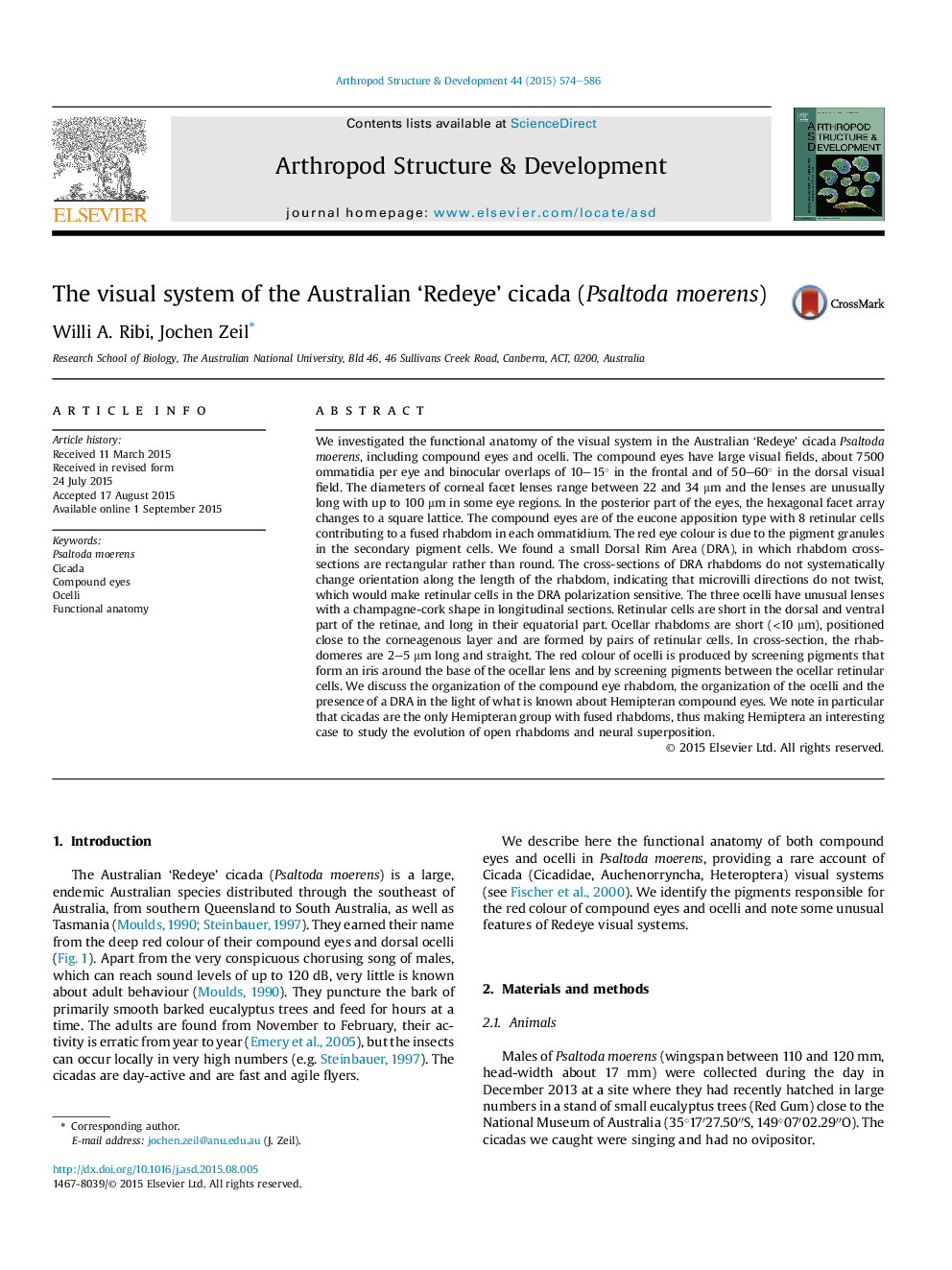| Article ID | Journal | Published Year | Pages | File Type |
|---|---|---|---|---|
| 2778576 | Arthropod Structure & Development | 2015 | 13 Pages |
•We provide a detailed account of the functional anatomy of compound eyes and ocelli in a cicada.•In the red eye cicada 8 retinular cells form a fused rhabdom.•The red eye colour is due to secondary pigment cell pigments.•We found a distinct Dorsal Rim Area, which has previously been thought to be absent in Hemiptera.•Ocellar retinular cells form short, paired rhabdoms and are likely to be polarization-sensitive.
We investigated the functional anatomy of the visual system in the Australian ‘Redeye’ cicada Psaltoda moerens, including compound eyes and ocelli. The compound eyes have large visual fields, about 7500 ommatidia per eye and binocular overlaps of 10–15° in the frontal and of 50–60° in the dorsal visual field. The diameters of corneal facet lenses range between 22 and 34 μm and the lenses are unusually long with up to 100 μm in some eye regions. In the posterior part of the eyes, the hexagonal facet array changes to a square lattice. The compound eyes are of the eucone apposition type with 8 retinular cells contributing to a fused rhabdom in each ommatidium. The red eye colour is due to the pigment granules in the secondary pigment cells. We found a small Dorsal Rim Area (DRA), in which rhabdom cross-sections are rectangular rather than round. The cross-sections of DRA rhabdoms do not systematically change orientation along the length of the rhabdom, indicating that microvilli directions do not twist, which would make retinular cells in the DRA polarization sensitive. The three ocelli have unusual lenses with a champagne-cork shape in longitudinal sections. Retinular cells are short in the dorsal and ventral part of the retinae, and long in their equatorial part. Ocellar rhabdoms are short (<10 μm), positioned close to the corneagenous layer and are formed by pairs of retinular cells. In cross-section, the rhabdomeres are 2–5 μm long and straight. The red colour of ocelli is produced by screening pigments that form an iris around the base of the ocellar lens and by screening pigments between the ocellar retinular cells. We discuss the organization of the compound eye rhabdom, the organization of the ocelli and the presence of a DRA in the light of what is known about Hemipteran compound eyes. We note in particular that cicadas are the only Hemipteran group with fused rhabdoms, thus making Hemiptera an interesting case to study the evolution of open rhabdoms and neural superposition.
Graphical abstractFigure optionsDownload full-size imageDownload as PowerPoint slide
